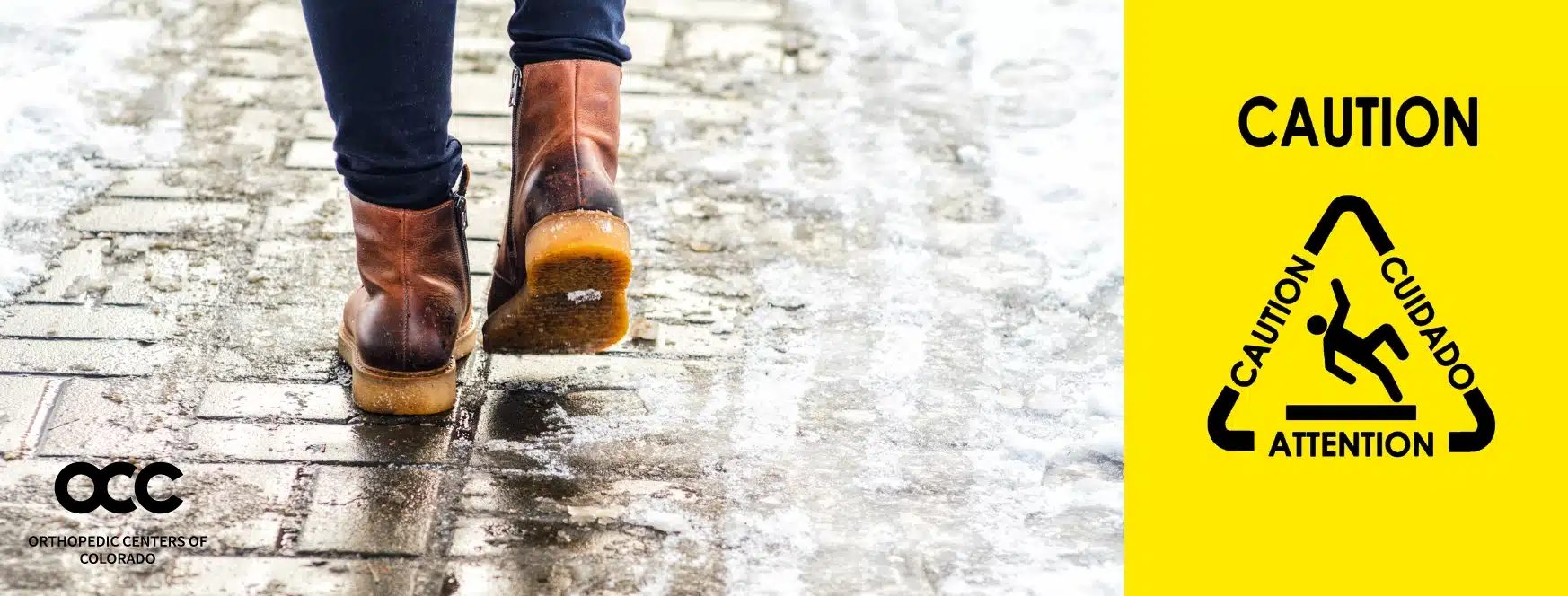Colorado is notorious for fast-moving winter storms that quickly turn into sunny days. And while we all appreciate fast-melting snow, the constant melting and refreezing means plenty of icy walkways and streets, which can translate to lots of slips and falls, which can result in a broken wrist. When you’re out and about this winter, take care to watch for black ice – especially in the mornings before the temperatures heat up.
While there are many injuries that can come from slipping on ice, one of the most common is a broken wrist. It’s a natural reaction to reach out your arms to try to catch yourself, and that often results in a wrist fracture. It’s so common, in fact, that orthopedic specialists refer to this as a “FOOSH” which stands for Falling On Out-Stretched Hand.
Symptoms of a Wrist Fracture
If you fall on your hand or wrist, you’re likely to experience swelling, bruising, and pain to the touch, which could be the signs of a wrist fracture. If the break is severe, your hand or wrist may show visual signs of displacement, and a bone can even break the skin. If you have trouble moving your hand or fingers or your hand or wrist is numb, it’s a good idea to seek immediate treatment. Waiting not only delays your pain relief but can slow or impair the healing process and can impact long-term recovery.
If a bone does break the skin – called an open fracture – medical treatment should be sought immediately to minimize blood loss and the risk of infection.
The two bones in your arm that connect to the hand are the radius and the ulna. A radius fracture – specifically a distal radius fracture – is the most common type of break from FOOSH. Distal refers to the location of the break, toward the end of the radius, typically within an inch or two of the hand. While the ulna can break too, it’s far less common.
Treatment options for a broken wrist depend on the location of the break, or breaks, and the severity. A hand and wrist doctor will do a physical evaluation to evaluate swelling, mobility, and any displacement of bones. If a break is suspected, they will recommend an x-ray or a CT scan to confirm the diagnosis.
Treating a Broken Wrist
The first priority is restoring the broken bone to its original position and keeping it there to allow for proper healing. A hand and wrist specialist will generally recommend a splint or cast to immobilize the joint, while severe breaks may require surgery to restore the bone position and maximize recovery. In some cases, a break can limit blood flow to the wrist or hand, which is serious. In this situation, emergency treatment is necessary to minimize tissue damage. If blood flow is interrupted for a period of time, bone tissue may die, and a bone graft may be needed as part of the reconstruction and healing process.
Your orthopedic surgeon will determine the right treatment plan for your situation with the goal of maximizing recovery while ensuring that the treatment plan is realistic for your level of health and other lifestyle factors.
If surgery is required, repair and stabilization may involve metal screws, pins or plates to reconnect bone fragments. Post-surgery, physical therapy is helpful in rebuilding range of motion and strength. Most people experience both stiffness and weakness post-surgery or after extended immobilization.
There are still several months of ice and snow ahead of us, so watch for icy sidewalks and wear sturdy rubber-soled shoes to minimize your risk of slipping. If you do fall on your hand or wrist, see a CCOE hand and wrist specialist to diagnose and treat your pain so you can get back to what you love. Schedule today.

















